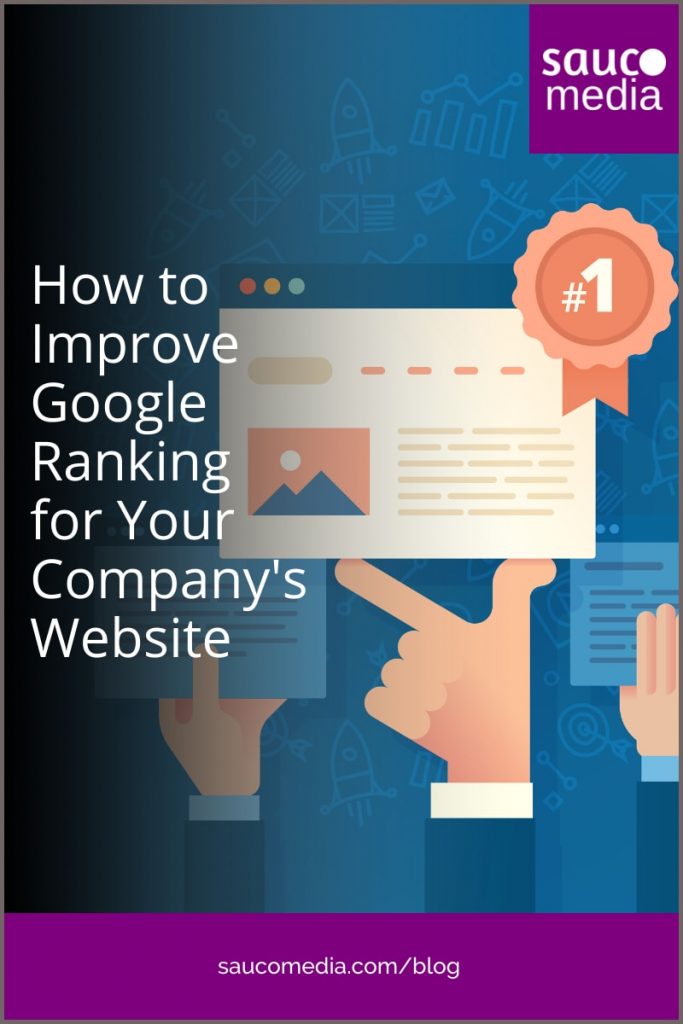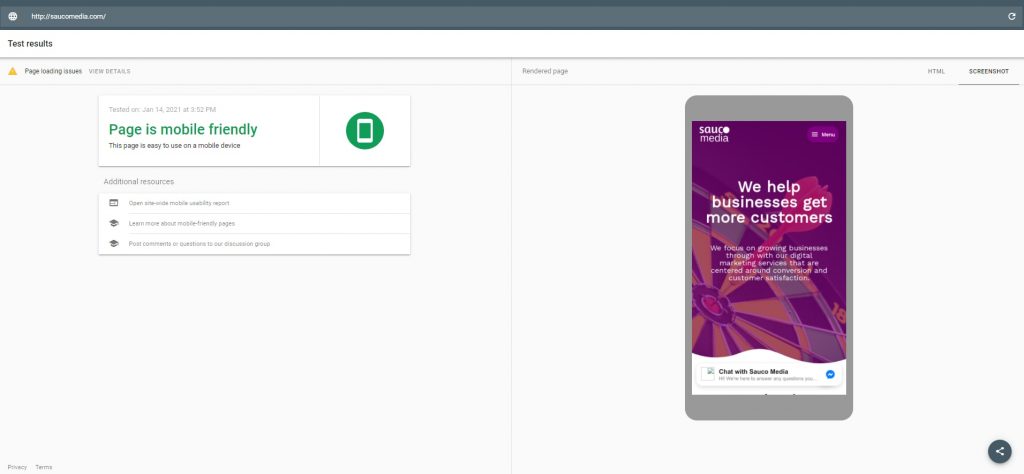Most customers make purchase decisions based on what they see about a company online, which makes it imperative that you increase your website visibility. If you’re not on page one for a key search result, more likely than not, your target customer won’t find you. Think about it: when was the last time you looked on page two or three of Google? The best advice to be found online is to improve Google ranking.
Remember, we discussed the reasons of why SEO is important for your business. So when your competition outranks you in Google, you are less likely to get your target audience to visit your website. The good news is there are a ways to push your rankings up and outrank your competitors. However, while you can implement great SEO tactics, the results often take time. Here’s why:
Everyone is interested in improving their visibility on the web. Many are looking for shortcuts.
The fact of the matter is that SEO is more of a long game and anyone promising quick results should be greeted with a high level of skepticism This post will break down the steps needed to boost your visibility in the Google search engine result pages (SERPs).
That said, I know you are equally interested in knowing one thing:

How to Improve Your Google Ranking
In order to improve the Google ranking of your website you need to do these three types of SEO for a well-rounded organic search strategy: on-page SEO, technical SEO, and off-page SEO.
By breaking down your strategy and thinking about SEO as these three categories, it will be much easier to organize and execute your optimization plans.
In this post, we’ll review each type of SEO and how they are important to your overall marketing strategy. Plus, we’ll show you different types of SEO tools that can help you improve your performance in each category.

ON-Page SEO
On-page SEO is the practice of optimizing individual pages in order to improve Google ranking, be on the first page of Google Search, and earn more relevant organic traffic. It includes strategies to optimize an individual page on a website. These factors help search engines understand the topic of the content and see that the website is a valuable source that people would want to find. This type of SEO includes:- Keyword research: Finding the best keywords to target on a page of content
- Content creation: Publishing high-quality content focused on target keywords
- Keyword optimization: Using the target keyword in all the right places and using good meta tag SEO.
Google puts slightly more emphasis on terms that show up early in your title tag. And they put less emphasis on keywords that show up later on.
Make sure you add your keywords in the first 100 words
The ideal place to start putting keywords in an article is within the first 100 words. There are many to whom these come naturally, but a large number of bloggers prefer a long intro before bothering with a keyword. This is inadvisable because of the obvious reasons that Google wouldn’t find it very relevant in the search results.
Put your target keyword in the URL
As keywords are essentially the backbone of on-page SEO, you need to pay a lot of attention to them. There is no reason not to include them in your URLs. The inclusion has its benefits. When you assimilate the targeted keyword into the URL, you are ensuring that Google’s has another reason and way to consider your article as more relevant for a particular phrase.
Post Long Content
I can tell you from experience that longer content does tend to rank best in search engines.
A target of around 2000 words should be set in every article with a minimum of 1000 words at least. This would inevitably result in long-tail traffic which would boost your site’s exposure.
Longer content not only helps in adding more keywords to it, but there is also a natural emphasis on information. The authenticity of a post increases with longer text, which means that Google would recognize it as something more relevant than a shorter and concise text. As search patterns are synonymous with long tail keywords nowadays, a longer text also improves the chances of your article/website to be on a higher ranking than others.
SEO is an investment, check our reasons of why you should invest in SEO:
Internal Linking to improve Google ranking
Internal linking is critical to decreasing a website’s bounce rate and optimization as it links to the different pages of a domain together. When “link juice” is spread, the users/viewers stay on the website longer and the site traffic also increases. It improves the navigational experience for the user.
Not to mention that it will also contribute to decreasing the bounce rate of your website.
Bounce rate is measured by how many users visit only one page and then leave the entrance page. Easy and accessible internal linking will naturally decrease this as users will be directed to other relevant articles.
Also, Google bots are designed to emulate user behavioral patterns and evaluate your website. A smart and efficient network of links on the pages help crawlers find regions which are not frequently visited by the users, thus boosting your site’s ranking.
Wikipedia is adept at using internal linking which is evident whenever you visit one of their pages.
They add keyword-rich internal links to every entry. However, don’t overdo it. I recommend a simpler (and safer) approach; link to 2-4 older posts whenever you publish a new one.

Image Optimization
When you have your website designed, ensure that the pictures on your website have file names which include the target keyword. Also, your target keyword should be part of your image’s Alt Text. This will improve optimization for your article and also create a clearer picture for the search engines to the relevancy of your article/page. Images are an important component of any website as they make pages visually attractive as well as informative. Optimizing your images should naturally boost your ranking. Also, your image will get a high rank in Google image search.

Off-Site SEO
Off-page SEO techniques help strengthen the influence and relationship your website has with other websites, therefore it helps to improve your Google ranking.
It includes strategies to build a website’s reputation and authority. These factors help search engines see that a website is an ideal search result because it is from a reputable, reliable, trusted source.
Most off-site SEO relates to high–quality backlinks. A large volume of links pointing to your site from relevant, authoritative sites shows search engines that your site is valuable and established. You can gain these trust signals through a variety of link building and guest posting tactics.
Off-page SEO refers to the techniques that go beyond a website. People associate off-page SEO with link building, however, it is more than that. The different tips related to this are:
You can’t just take a “publish and pray” approach to content marketing and HOPE that people link to you. That’s because your content is a drop in an ocean of blog posts, videos, Instagram stories and Facebook posts that come out every single day.
Brian Dean, Backlinko Tweet
Build quality backlinks
Link building is the most important – and the most challenging – SEO strategy. The truth is, without any high-quality backlinks, your website won’t rank for competitive and high traffic keywords, therefore your ranking on Google won’t be the best.
The websites with the most valuable and relevant backlinks will ultimately rank over the rest.
Most off-site SEO relates to high–quality backlinks. A large volume of links pointing to your site from relevant, authoritative sites shows search engines that your site is valuable and established. You can gain these trust signals through a variety of link building and guest posting tactics.
To create a link building plan, I can recommend Alexa’s Competitor Backlink Checker. That is a good starter point.
Another good resource is this 9 link building strategies video that work best for some content creators.
Commenting on blogs also helps to create backlinks, which in turn create traffic for your blog. Most of these links are worthless and thus carry little value, but the process is still helpful. For new blogs, comments – user generated content – will help get a website indexed faster. Commenting helps drive referral traffic to your blog. However, it is important to post a valuable comment.
Broken Link Acquisition
Another way to research link building opportunities is by looking for sites that have broken links. In some cases, a website links to a resource or source only to later have the linked page be removed or taken down. This leads to a broken link on their site and an opportunity for you to replace it.
Look for sites that are relevant to your industry or topic and have broken links (using tools like Check My Links). If you come across a broken link that could lead to a resource on your site, reach out to that site. Notify them of the broken link and provide the possible replacement to your site.
Off-Page SEO Techniques to Build Reputation
Links send concrete signals to search engines telling them that your website is high quality, relevant, and well-known. But you don’t always need a link to show search engines that your brand or website is important and popular. There are a few other non-link reputation signals that matter too.
Be active on social media
Although Google doesn’t hold much stock in social media as far as ranking is concerned, you can actually improve your site’s popularity and traffic by being active on Facebook, Twitter, Instagram or any other social media network. The more you post links to your blogs on social networks, the higher the chance people will visit your blog, thus increasing traffic.
A strong social presence builds authority and reputation. It creates brand fans, spreads your content online, and drives people back to your site. This increases your site traffic and views, which does have a proven correlation to improve SEO.
You can check our Social Media Guide for more information about this technique.

Technical SEO
Technical SEO relates to non-content elements of your website.
It includes strategies to improve a site’s backend structure and foundation. Technical SEO improves a site’s readability (which makes it easy for search engines to crawl and understand the site) and provides a good user experience, which helps search engines see that the site is high quality. A good user experience is also important for readers, and can affect overall traffic and engagement rates.
The types of SEO included in this category relate to:
- Site speed
- Mobile-friendliness
- Indexing
- Crawlability
- Site architecture
- Structured data
- Security
An easy way to check on the state of your technical SEO is by using our SEO Audit Tool. Enter your site to receive a report on the status of multiple technical elements along with instructions for how to resolve issues if you have any.
For 90% of the websites out there, technical SEO is NOT an issue. However, technical SEO problems can really hurt your site’s SEO.
The first thing we recommend is to double-check that your site is 100% optimized for mobile devices. It’s 2021. So this probably isn’t an issue for you. But check this anyways, better safe than sorry.
If you need help with this, do a test. Enter the URL from your website into this Mobile-Friendly Testing tool from Google If you see all green, you’re set.

If not, that’s something you want to fix as soon as possible.
I also recommend looking to see how quickly your site loads. It’s no secret that a site’s average loading time is a Google ranking factor. Page Speed isn’t that important of an ranking factor, however it really helps with conversions. Customers don’t have the patience to sit around waiting for a slow website to show up on their smartphone or desktop; they want everything immediately. The longer you make them wait, the more interest they lose in you.
So go ahead and run your site through site speed tools like WebPageTest.org. It’s free and gives you a long list of ways you can speed things up.
If your site runs on WordPress, I recommend using the RankMath plugin Will this plugin magically improve your rankings? Definitely No. But it can help make your WordPress site SEO-friendly out of the box.
Talking about WordPress, let me tell you that plugin clutter significantly slows down site performance by creating too many extra files, thus increasing load time. It’s best to avoid the use of plugins whenever possible, and though it’s not ideal to get rid of them altogether, there are ways to reduce the overall count.
To learn more about how to crawling and indexing your website you can visit our first SEO article. This complements what we are sharing here and will definitely help you to improve Google ranking.
Conclusion
Your website may very well be critical to our businesses and recognition, but it’s the keywords and more importantly, the ranking which make us significant or otherwise.
To maintain a name in the industry, it’s important that your website is relevant to the user’s search criteria.
If you are wondering on how to get a brand new website ranked, remember the steps mentioned in this article are essential to that end. To sum it up, what Google deems significant or reliable is what the public accepts.
If anything is missed please write it down in the comment section. I’d love to know what you think about this post.

